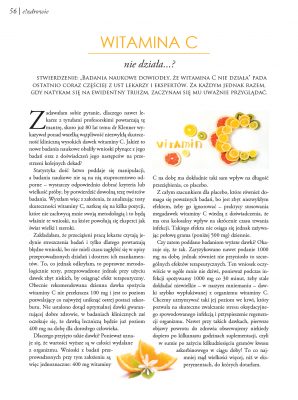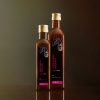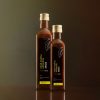
Below is a polite version of my opinion article published in the December issue of Estilo magazine on scientific research and vitamin C. This polite version is proof that I can control my tongue. At least on the second try 🙂
On the wave of increased interest in the topic, doctors and experts have been increasingly stating that “Reseach has proven that vitamin C does not work”.
However, every time I come across an evident truism, I start to look at it carefully.
I asked myself why even doctors with professorial titles keep repeating this mantra, when already 80 years ago Dr. Klenner demonstrated beyond any doubt the extraordinary clinical efficacy of high doses of vitamin C. What new scientific research was there that invalidated the conclusions of his research and the experience of his successors in the decades that followed?
Statistics are quite easy to manipulate, and scientific research is not one hundred percent immune to such manipulation – if you choose the right criteria or sample size you can confirm any thesis proposed by the authors of a study. So I assumed that in my analysis of trials of vitamin C effectiveness, I would come across several publications with questionable methodology and it would be the conclusions from these studies that experts refer to all over the world.
I assumed that doctors, overloaded with work, only read abstracts of studies and repeat wrong conclusions simply because they do not have time to delve into the details of these studies and discover their shortcomings. What I discovered, however, were trials with the correct methodology but doses too low to achieve a therapeutic effect. Currently, the recommended daily intake of vitamin C does not exceed 100 mg and this amount helps at most to avoid an acute form of scurvy. The optimal dose that guarantees good health has not yet been established, and in clinical trials the sufficient therapeutic dose is expected to be 400 mg per day for an adult.
Why were such doses determined? Because larger amounts are considered to be completely excreted from the body. The conclusions of studies conducted under this assumption are therefore unequivocal: 400 mg of vitamin C per day has exactly the same effect on the length of a cold as a placebo.
With all due respect to placebo, which also requires serious research because it is too unusual an effect to ignore – practitioners of the use of megadoses of vitamin C know from experience that it can tremendously help shorten the duration of infections. However, this effect can’t be achieved by taking half a gram (less than 500 mg) per day.
So have higher doses been studied? It turns out that they have. They went as high as 1000 mg per day but no specific therapeutic effects were observed either. Of course, this conclusion does not surprise me at all, because during an infection we take 1000 mg every 30 minutes in order to continually add small – in our opinion – doses of vitamin C, which is quickly flushed out of the body. We want to maintain a level of vitamin C in the blood that helps us to overcome oxidative stress caused by the infection and accelerate our body’s regeneration. Even with such doses, the first symptoms of recovery are sometimes observed only after several hours of supplementation, i.e. after taking several dozen grams of ascorbic acid during a signle day! This is at least an order of magnitude more than in the experiments I have found.
So who can go higher? The Australian Centre for Epidemiology conducted a study in 1998 with a ‘megadose of vitamin C’ in its title. It starts well: a randomized, double-blind trial, a control group, seemingly everything as it should be, but the doses that were used did not exceed 3 grams per day. The experiment was therefore carried out correctly, but with the chosen doses it was doomed to fail from the very beginning. (https://www. ncbi.nlm.nih.gov/pubmed/11700812)
So far, I have not found studies on the effectiveness of vitamin C in the course of an infection, that would use doses higher than 3000 mg per day. Of course, I do not claim to have searched all the available literature in the world, but it seems that the papers I managed to find are a representative research sample. The conclusions of theses studies could explain the established belief among doctors that vitamin C supplementation during an infection is essentially pointless.
On the one hand, I understand the reluctance of the medical world to experiment with even higher doses of ascorbic acid, due to the fear of kidney stones (for which, by the way, there is no clear scientific evidence). At the same time, however, we have almost 100 years of detailed reports from doctors of various specialties (F. Klenner, R. Cathcart, T. Levy, P. Marik, et al.), who, using doses as high as several dozen grams per day (intravenously and orally), show both the extraordinary antiviral effectiveness of vitamin C as well as its antioxidative, antihistamine, anti-inflammatory, detoxifying properties. Not to mention the work of dr Paul Marik who has been saving lives of patients suffering from acute sepsis by using, among other things, intravenous infusions of sodium ascorbate.
Being skeptical only on the basis of doses that are too low is therefore dishonest in my opinion. At most, you can state that the effectiveness of a given level of vitamin C has not been demonstrated, but it is impossible to conclude that it does not work at all, so it is time for more trials and new conclusions. Throwing the “baby out with the bathwater” on the basis of incorrectly designed experiments, contrary to many years of reports from clinicians, does not serve anyone, least of all patients.
As with any medical procedure, there is a benefit-risk balance to consider, and the risk associated with using a few grams of vitamin C is negligible even for people with G6PD deficiency.
Therefore, I strongly encourage all those who are unconvinced to suspend their skepticism and test high doses of vitamin C on themselves when the first symptoms of the next cold appear. Autumn is conducive to infections and also to experiments: 1000 mg every 30 minutes taken as a supplement that is easily absorbed, in accordance with our tested formula, should bring about a noticeable effect on the same day (https://anna-bee.com/en/blog/beat-viruses-with-vitamin-c/) or after 3 days at the latest. Therefore, the saying that ‘an untreated cold lasts seven days whereas a treated on lasts one week’ can be consigned to the past.
Any excess vitamin C is excreted on an ongoing basis by the kidneys, intestines and liver. The experiment is simple, safe and cheap, and when it turns out to be effective, it allows you to gain a new perspective on the issues of inflammation and illness in general. In fact, there is nothing to lose, but a lot to gain. It’s worth it!
If you are looking for vitamin C in a natural syrup and mega dose, click here

 Polski
Polski
